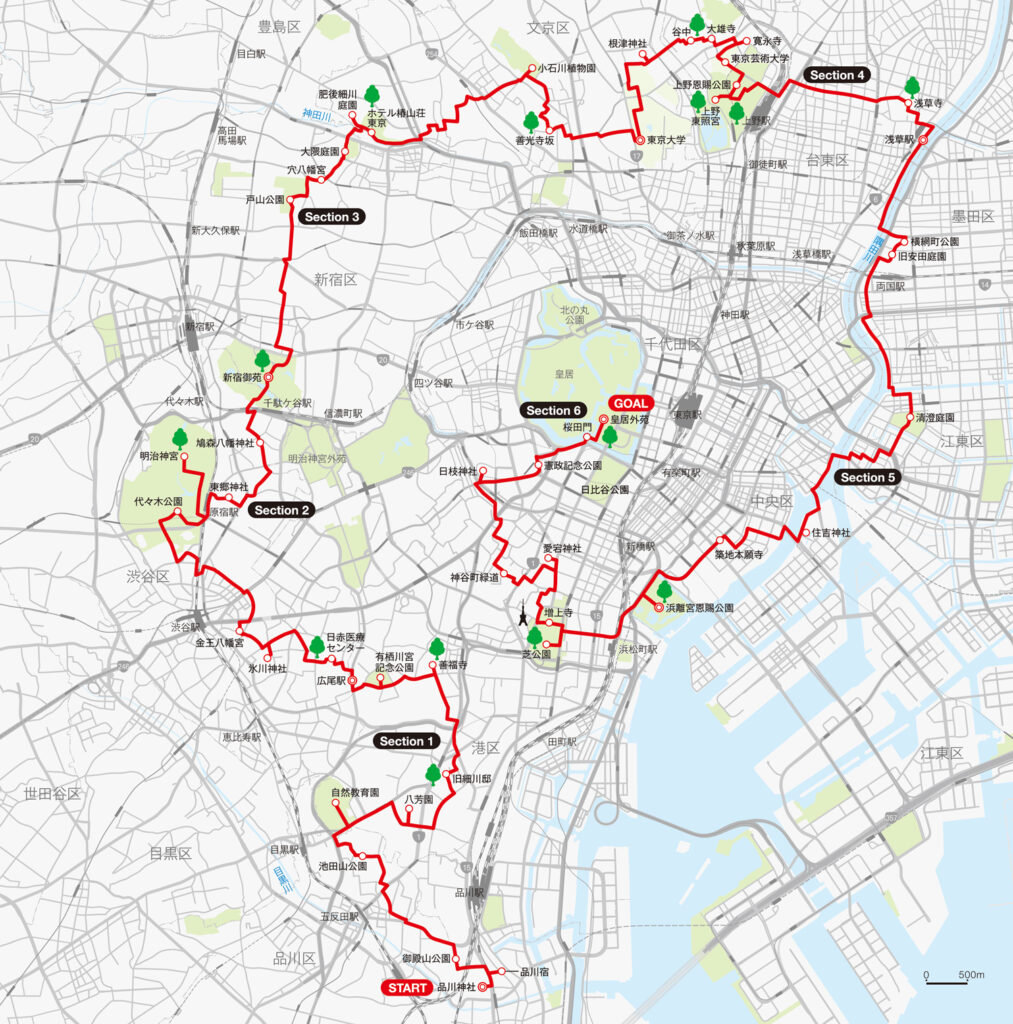First impressions of Tokyo’s vast urban landscape can be overwhelming, often filled with a stereotypical view of the most populated city on earth. But beyond the bright lights, concrete and relentless sounds there’s a green side to the metropolis many have never experienced.
In an attempt to rediscover Tokyo’s green spaces and its trees. Lucas Badtke-Berkow and his wife Kaori, editors of Japanese travel and lifestyle magazine ‘Papersky’, meticulously planned a trail over six months of research and discovery through Tokyo’s unique and ancient trees to reflect its deep cultural history.
The route literally spirals through the city on a 60km course, passing through some of the busiest areas yet remaining calm. Avoiding busy roads where possible, opting for quieter, more idiosyncratic backstreets. The course’s six sections are open to be cycled, hiked or run and can be explored over as many days as you like or dipped into for a single stage depending on how much of Tokyo’s historic and gastronomic culture you want to sample.
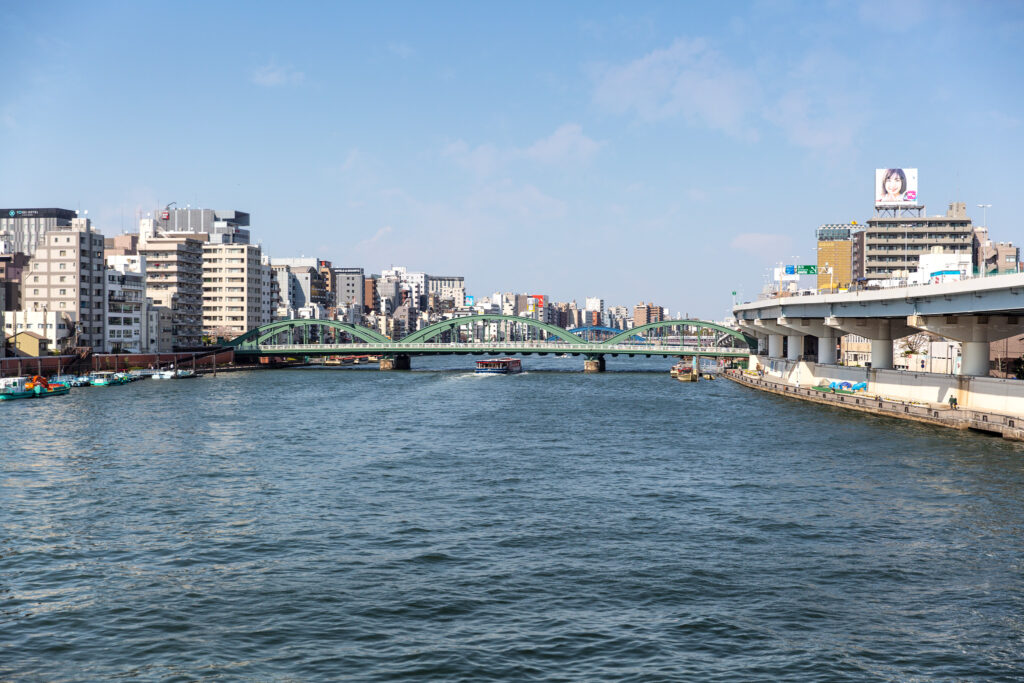
Asakusa to Tokyo Imperial Palace
The beginning of Section Five heads out from Senso-ji along the Sumida River to Hamarikyu Gardens. There are few large trees in this once densely populated area, largely destroyed in the Great Kanto Earthquake of 1923 and again in the firebombing of 1945. At Azuma bridge there are two routes. If you’re on foot there’s the retro-futuristic water-bus that takes you along the Sumida River, landing within Hamarikyu Gardens. By bike the route continues south along Sumida River, passing through Yokoamicho Park and the memorial for the many thousands that perished here in fires that devastated Tokyo after the Great Kanto Earthquake. A little further on in the sumo district of Ryogoku we walk through the small but beautiful Kyu-Yasuda Gardens. Landscaped for Zenjiro Yasuda, founder of Yasuda Bank and great-grandfather of Yoko Ono.
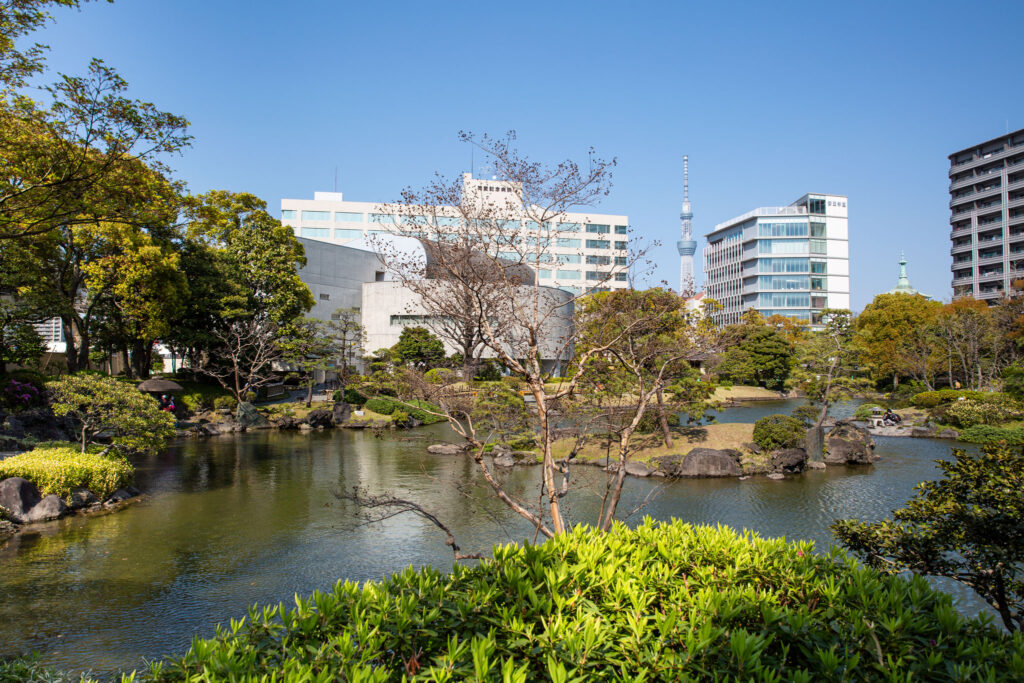
Home to numerous coffee roasters, this area supplies beans throughout Japan, including Blue Bottle, Allpress and Iki Espresso an Oceania-style café in the heart of the Kiyosumi Shirakawa, popular with many cyclists for their New Zealand style coffee and great food. At this point you can choose to cycle through Kiyosumi Park or spend more time in the traditional Kiyosumi Gardens watching turtles and fish under the surface of the pond from the isowatari stepping-stone paths.
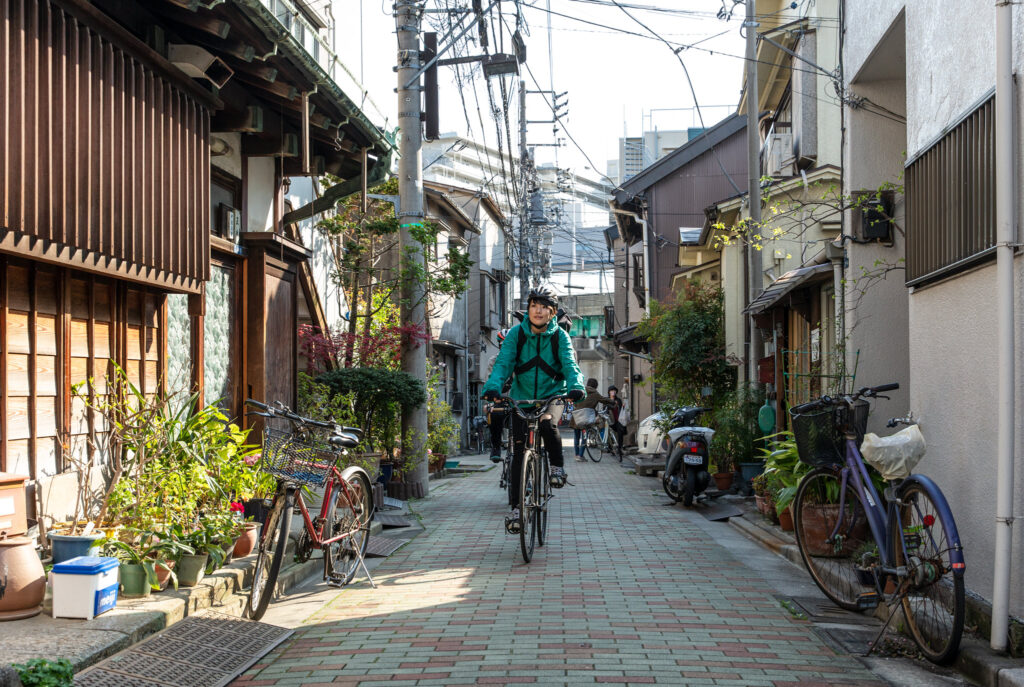
Working our way through a selection of bridges and backstreets we find ourselves on Tsukuda Island, a place that retains a feeling of an older Japan. Originally settled by an elite group of fishermen from Osaka, brought there by Tokugawa Ieyasu the legendary shogun over 300 years ago. It’s the birthplace of tsukudani, a seafood preserve, often accompanied by rice. We visited the oldest store on the island, Tenyasu to pick up some omiyage.
There’s a selection of small parks before navigating through the backstreets of Tsukiji and on to the remaining few kilometers toward Hamarikyu Gardens which is fairly uneventful, making the experience within this oasis so much more inspiring. The combination of skyscrapers towering behind huge ancient pines is unique. The oldest tree here is a 300-year-old black pine, the largest in Tokyo—planted by the 6th shogun Tokugawa Ieyunobu and cared for over centuries to retain its bonsai-like shape.
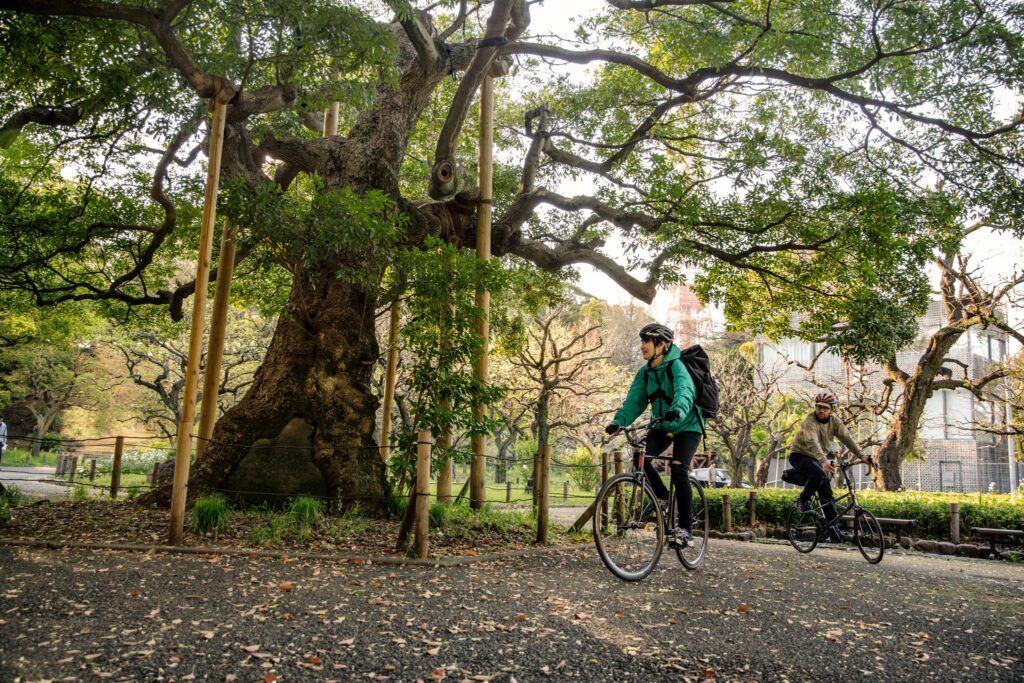
From here the route leads through Hamamatsu-cho towards Shiba Park and Zojo-ji under the shadow of Tokyo Tower which seems to be constantly in view. Within the expansive park there’s a 200-year-old giant bay tree, a cedar planted by President Grant and a giant 21m tall ginkgo, thought to have been planted in the 1600’s by Tokugawa Iemitsu the 3rd Shogun. The route travels through small backstreets and green areas until we reach the towering steps leading up to Atago Shrine, built in 1603 and at 26m the highest natural terrain in metropolitan Tokyo.
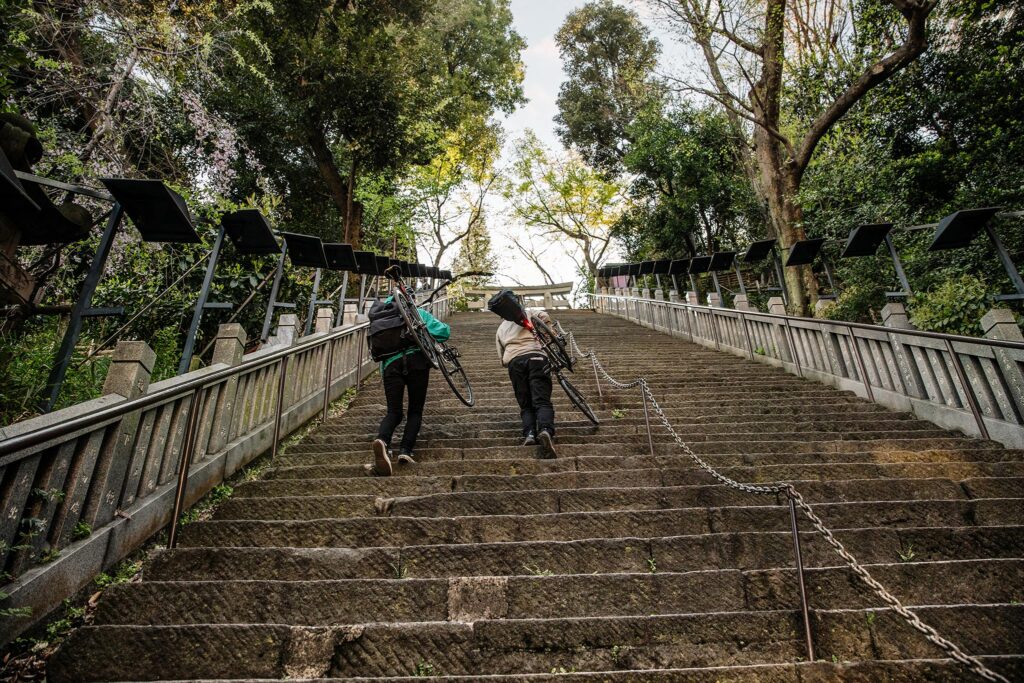
Theres a sign informing people that running or training is prohibited, though carrying bikes up the steep flight of 86 stairs is a minor challenge. At the top you’ll find relaxing tree filled gardens full of history, where people would once gather to view Tokyo Bay and as far as the Bōsō Peninsula.
There’s a winding road that we follow down through the Toranamon area, where old Japan meets new in its many contrasts. If you arrive in time there’s Sowa, a small homemade ice cream store that’s been here since the 1950’s, creating some distinctly Japanese flavors. A little further on, a side street leads to Kamiyacho Ryokudo, a tree filled path alongside the Swedish Embassy, past Hotel Okura and onto Akasaka towards the largely modernized Hie Shrine. You can choose escalators over steps to take you to its top surrounded by tall buildings.
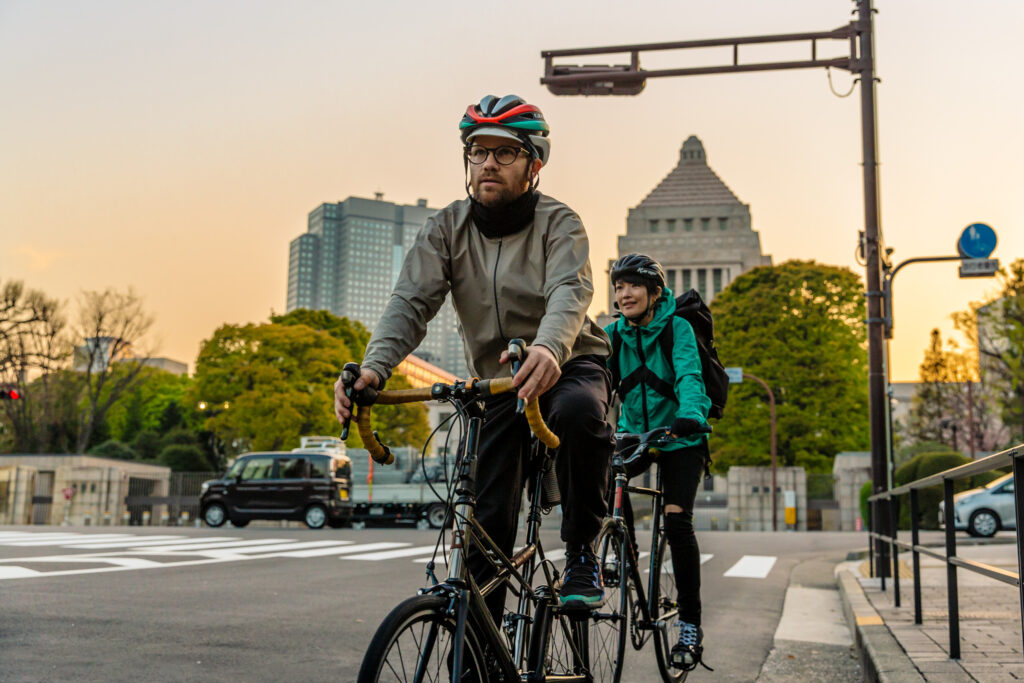
From here we head to the final climb towards the National Diet Building and Kensei Memorial Park. Bikes need to be pushed through here, but the change of pace and scenery is good if you have time to explore before heading toward the Imperial Palace where the end of the Tokyo Tree Trek at Sakuradamon Gate comes into view. The 5km loop around the Palace has trees from all prefectures of Japan, a very popular training spot for runners and cyclists, but for us it’s a short ride downhill with the Palace moat on our left towards the outer garden or gaien with its beautifully manicured 130-year-old Japanese Black Pine among perfect green lawns. The view here is an embodiment of the contrasts found in Tokyo, where history, nature and the strikingly modern exist in some kind of harmony.

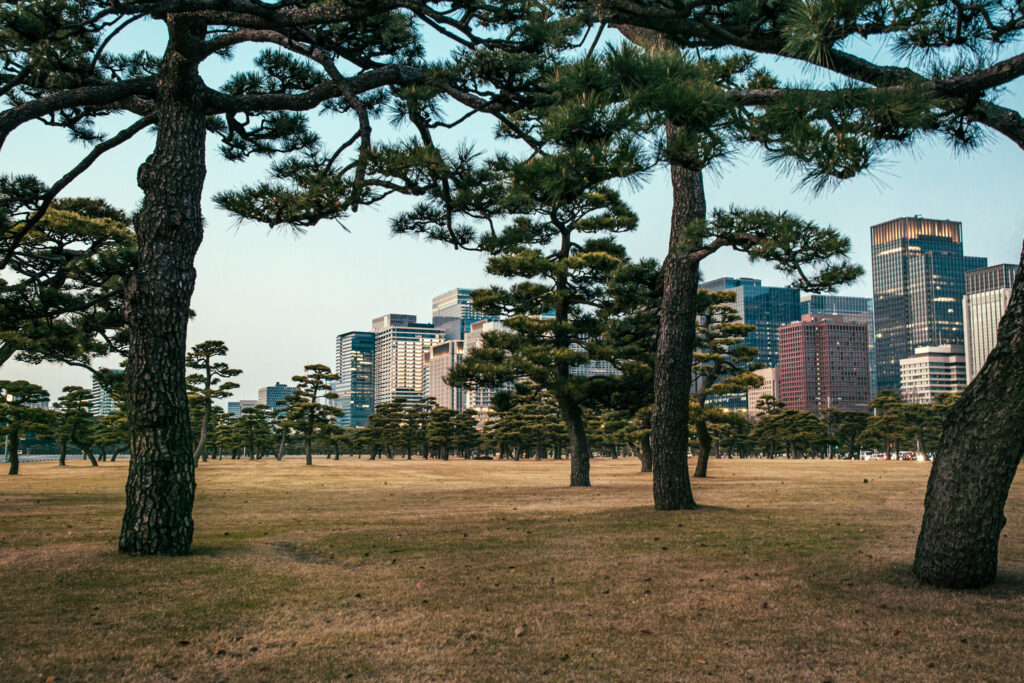
If you feel like ending the ride with a meal under a 400 year old tree, a little down the road is Matsumotoro, one of Japan’s most historic restaurants, located at the center of Hibiya Koen, Japan’s first Western style park, here since 1903 when the park first opened. You can eat the same simple and inexpensive yōshoku that made it famous over 100 years ago.
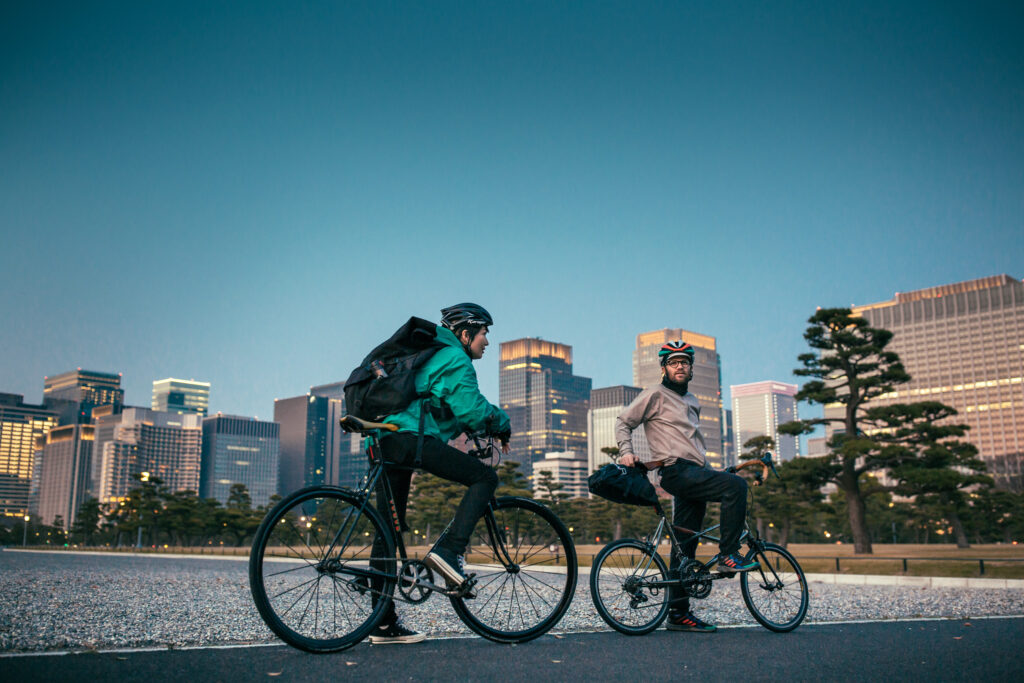
Read about all six sections of the Tokyo Tree Trek:
・Sections 1&2 Kita Shinagawa to Shinjuku Gyoen
・Sections 3&4 Shinjuku Gyoen to Asakusa
・Sections 5&6 Asakusa to Tokyo Imperial Palace
PAPERSKY has created a 60km trail that connects trees in Tokyo. This original route starts from Shinagawa-juku (Kita-Shinagawa), which welcomed travelers as the gateway to Edo (old name for Tokyo), and winds around in a clockwise direction to the Imperial Palace, where Edo Castle once stood.
